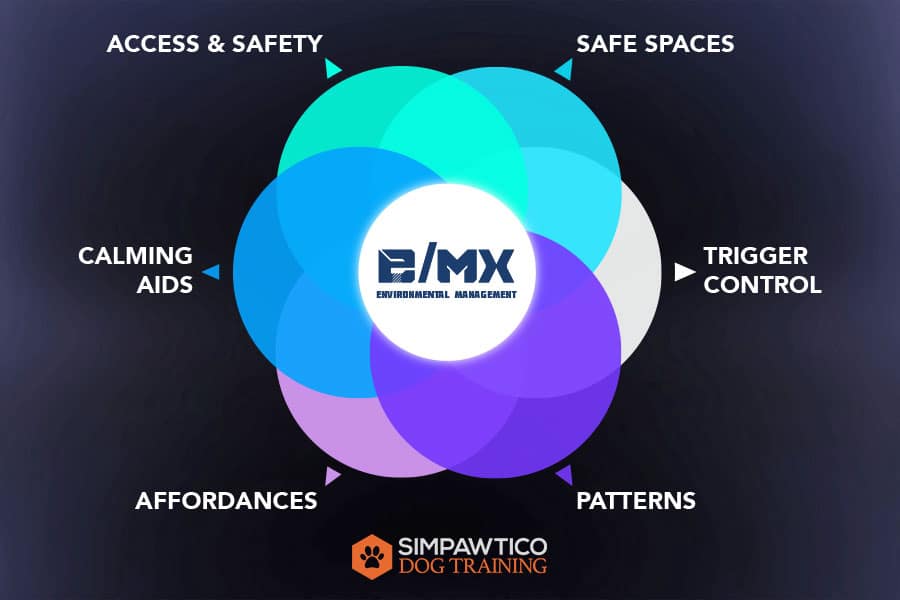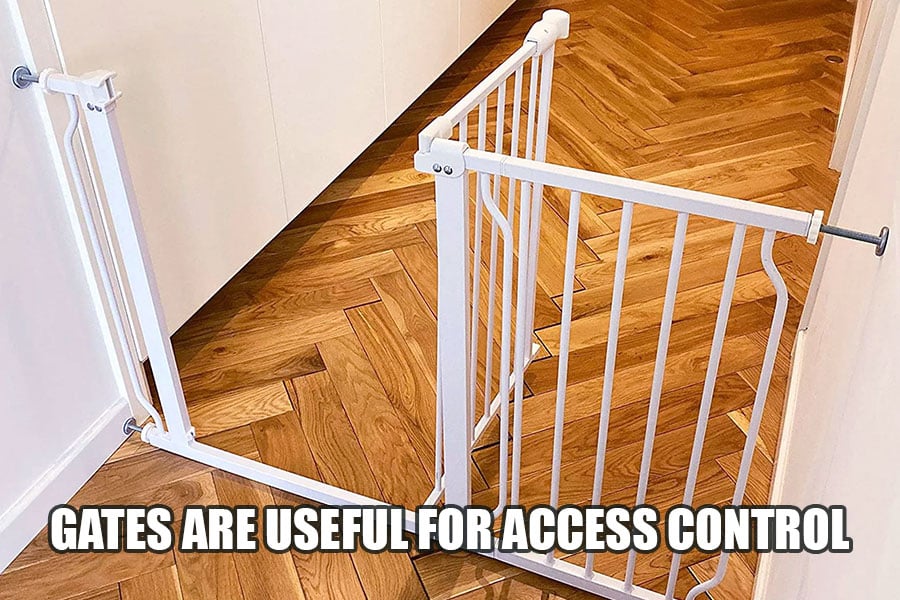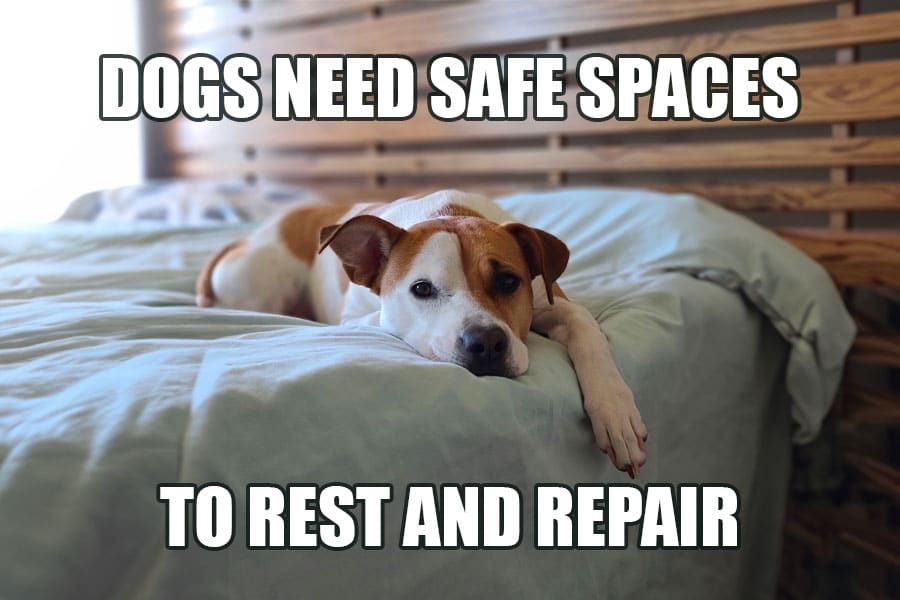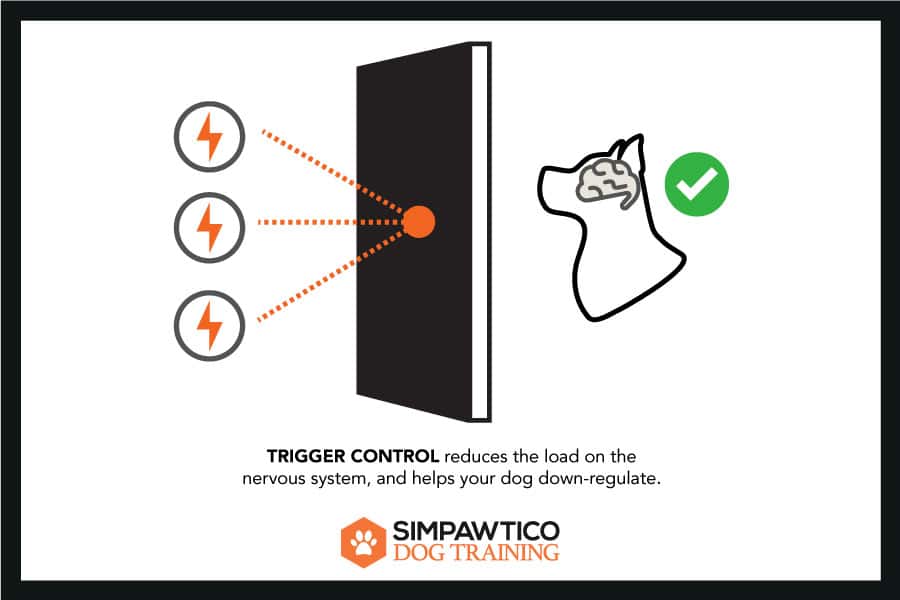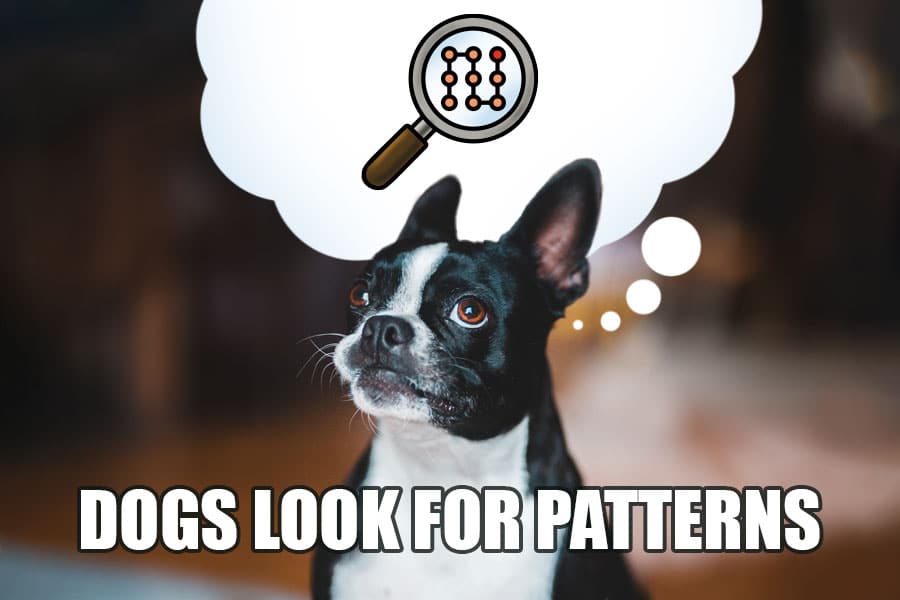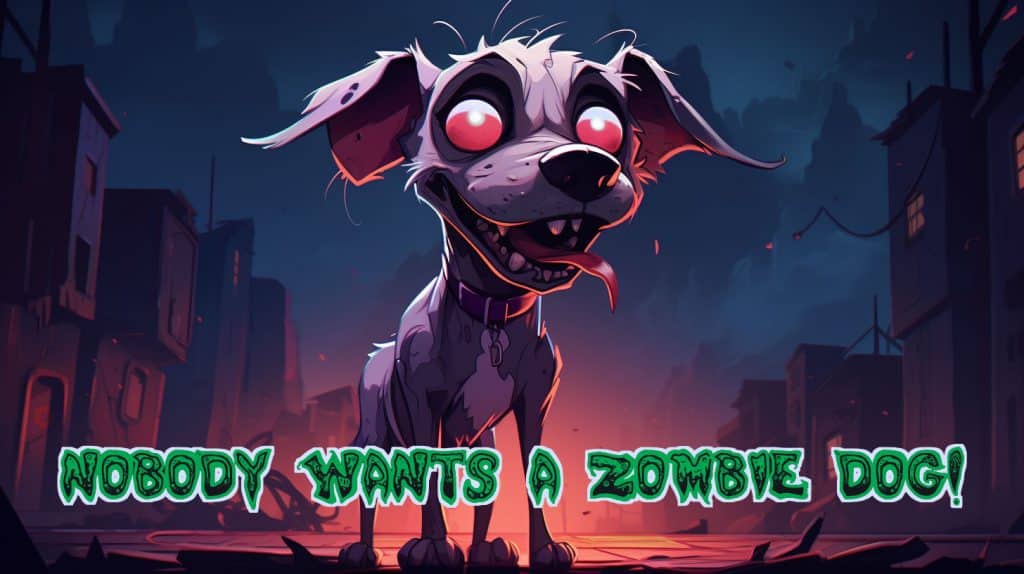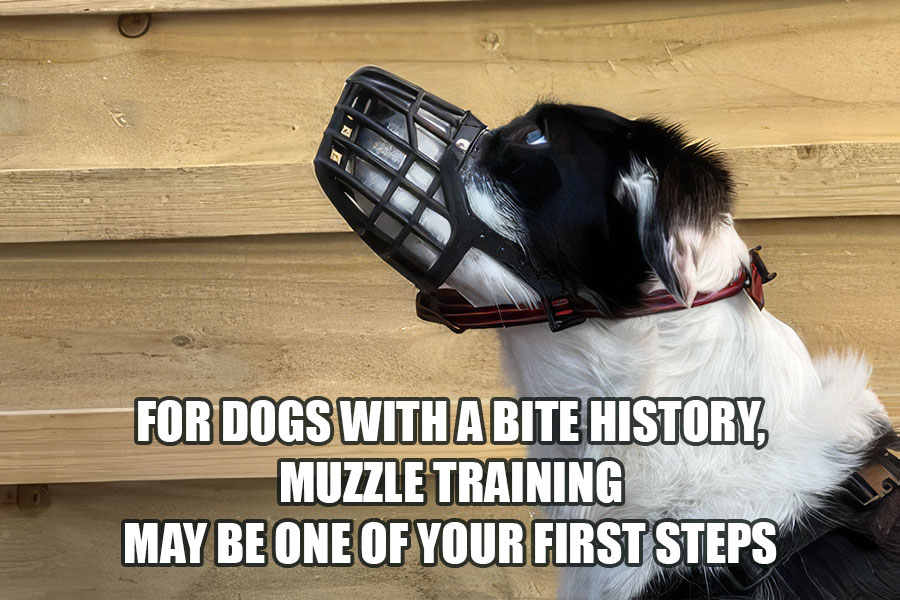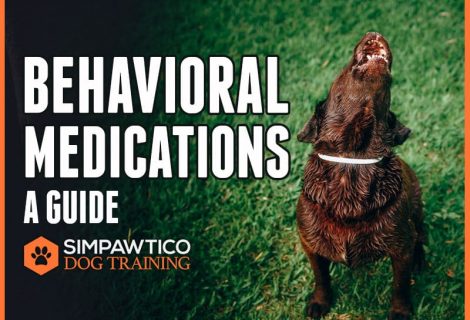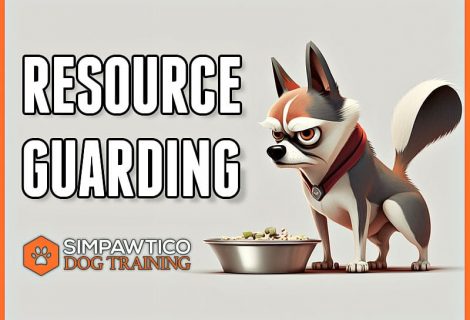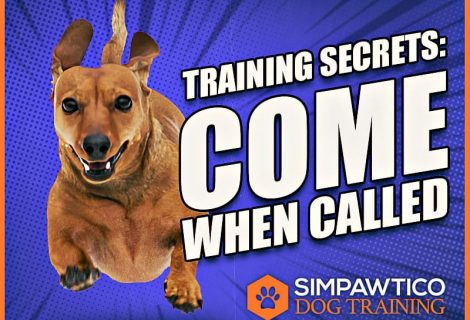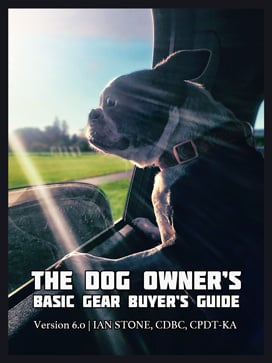Conquer Canine Challenges: 6 Dog Training Strategies for Environmental Management
This post contains affiliate links. Please read our full Disclosure Policy
Environmental Management is vital in the prevention and treatment of common problems. Maintaining good management in your home can prevent issues from arising, even if you are not currently experiencing any.
However, if you are struggling with some “big behaviors,” Environmental Management will be paramount. And by “big behavior problems,” I mean things like separation anxiety, fear and phobias, hyperarousal, reactivity, aggression, and variations and combinations. That also covers the entire gamut from “kind of annoying” to “dangerous to the dog and others.”
When someone comes into Simpawtico to get help for one—or more—of these problems, Environmental Management is one of the first things we discuss. Over the years, I’ve developed a set of six parameters when looking at environmental management:
- Access & Safety
- Safe Spaces
- Trigger Control
- Predictable Patterns
- Affordances
- Calming Aids
Let’s be clear…
Now, I know this is the internet, and you have to spell everything out with excruciating clarity—SO, none of the information provided is meant to replace proper training or behavior modification. Instead, focusing on effective environmental management can significantly enhance the success of your other work.
1) ACCESS & SAFETY
“Access & Safety” refers to physical objects, access points, and opportunities for trouble. The goal is to prevent or minimize situations that may be problematic.
For example—and I know this seems kind of obvious—folks who express frustration about dogs rummaging through the trash could have prevented the situation by limiting access to the trash in the first place.
As a professional consultant, I see all the time how foresight and practical management could have prevented many problem situations. I’ve seen aggressive dogs with free access to the front door when people come in, or are off-leash in the front yard when the Fed-Ex guy rolls up.
Look at the Traffic Flow
The macro picture here is to look at the traffic flow of the environment. Look at how your dog moves through the space. Should there be safety layers? Should access to certain areas be restricted? And what simple changes can be made to make the area safer for them and the humans?
Taking the time to consider this aspect can help prevent many potential behavior issues.
Here are a few more examples:
- Use baby gates to restrict access to certain areas of your home where dogs might get into trouble. This is critical during potty training, raising a puppy, or dealing with intra-household aggression.
- If your dog becomes destructive when stressed, avoid giving them unsupervised access to the spaces or items they tend to destroy.
- Feed resource-guarding dogs in separate areas.
- Don’t leave a poop eater unsupervised in the yard, pick up poops after they go, and use dog-proof litter boxes if you have cats.
- Keep laundry, medications, toxic plants, and harmful chemicals out of your dog’s reach.
- Don’t let your fence-fighting dog go outside unsupervised, where they can get riled up. Take them out when the neighbor’s dog isn’t, use a leash, and keep things calm.
You’ll want to have redundant safety measures when addressing significant behavioral issues. In these cases, a good rule of thumb is always to have at least two safety layers. These include gates, doors, pens, crates, fences, leashes, tethers, and back-ties.
Muzzles
Even muzzles fall into the Access & Safety category. If you’re working through aggression issues, safety and management tactics like a muzzle and a gate are necessary parts of the work before you even get to the training aspect.
Keep in mind that the layout of your home and the routines of your life will play a role in determining the best solutions. There is no one-size-fits-all answer, but assessing the situation critically is essential.
2. SAFE SPACES
“Safe Spaces” refers to places your dog can go to decompress or rest. Dogs need areas that are safe and comfortable for them if they’re feeling scared or overwhelmed.
Usually, any talk of “safe spaces” immediately devolves into a discussion on crates. And while crates can be helpful for many dogs, please remember it’s not the only solution or even the best solution for some dogs.
Creating safe places for your dog can be as simple as a comfortable bed or couch they can go to when they need some space. Or, you could set up an area with calming music, toys, downtime activities like chew toys and puzzle feeders, and more.
The point is to make sure somewhere in your home there is a safe and protected place your dog can go, especially when you cannot supervise them.
A Quiet Space
The Safe Space doesn’t always need to be a space your dog goes to voluntarily. Sometimes we put a dog in a safe space because they can’t regulate themselves, and we need to intervene. We’re saying, “Hey, I see you’re having a tough time. Why don’t you take a few minutes to pull yourself together, and we’ll try again.” Occasionally, a brief respite behind a gate or in a separate room can effectively alleviate the intensity of a situation.
This isn’t a punishment; it’s a cool-down period.
Providing your dog with one or even an array of designated safe and tranquil spaces can work wonders. It helps them feel secure and lowers their stress levels, contributing to their overall well-being.
This leads right to the next strategy.
3. TRIGGER CONTROL
“Trigger Control” is managing the environment to reduce exposure to things that provoke an unwanted response.
Identifying what triggers your dog’s problem behavior and removing or minimizing them can help prevent the behavior from occurring.
For example, let’s say your dog has trouble with other dogs. You may not want to take them to the dog park. Instead, introduce them slowly in controlled situations, with safety layers and good pre-training.
OR, use visual barriers to keep reactive dogs from activating because of the mailman or pedestrians.
Distance also makes things less intense, so stay farther away from known triggers to keep your dog under threshold.
You likely won’t be able to completely avoid triggers, but managing exposure is key. Remember, the goal with trigger control is not to avoid the triggers forever but to manage the dog’s environment while you work on training to modify their responses to those triggers.
4. PREDICTABLE PATTERNS
“Predictable Patterns” refers to the predictable systems and habits that help dogs feel safe, secure, and capable in the environment. They reduce confusion, provide safety, and build frameworks for your other training.
Think of it this way: pattern recognition is how organisms survive and evolve. All organisms identify patterns in their environment and generate behaviors to deal with them. Successful behaviors are reinforced, while unsuccessful ones are discarded.
This process happens when you start a new job or move to a new city, just like when dogs enter a new home or when you bring another dog home. However, this pattern recognition can sometimes go awry because dogs live in a human world that wasn’t made for them.
So, one of the most powerful things we can do with dogs is to create predictability in their environment. Usually, predictability looks like sensible routines and procedures.
Two of my previous posts discuss this concept in detail because it’s so crucial in looking after any pet animal:
Patterns are Better Than Commands
There’s a massive emphasis in training on “teaching commands,” but patterns establish and maintain behavior much more effectively and organically than “commands.” The brain’s role is to anticipate environmental contingencies and map behavior accordingly. Anything we request dogs to do should fit the patterns they encounter and help them learn to navigate them on their own.
To ensure optimal behavior and well-being, provide the brain with the stability it looks for. Establish regular meal and bedtimes, consistent boundaries and expectations, designated potty spots, designated areas for them to be, and activities for when they go outside or when people visit. Everyone in the household needs to be aligned and interact consistently.
Just like with children, approach each situation with a mindset of “At this point in our day, this is what we do, and this is how we do it.”
Some Existing Patterns May Need Repair
The other side of this coin is that disruption of patterns may also be part of your thinking.
Behavior problems almost always live inside dysfunctional patterns. But because the brain holds onto patterns, even unproductive behaviors increase. So, to introduce a new pattern—and better behaviors with it—you will have to block that highway and re-route.
Look at the patterns in your home with a critical eye.
- Keep a pattern if it’s working already.
- If you see a situation that’s not working the way you’d like, introduce a productive pattern.
- If you notice an existing pattern causing a problem, disrupt the pattern rather than just correcting individual behaviors.
Not only is this approach to behavior more effective and efficient, but it also resonates with dogs on a general and social level. It helps reduce anxiety and fosters trust in their environment and relationships.
Of course, if you have a puppy, As with all the other strategies, there is no better time to implement good patterns than right from the very beginning!
5. AFFORDANCES
“Affordances” are things that stimulate your dog’s natural drives.
In Mother Nature’s playbook, the environment will have offerings to the animal complementary to their adaptations. Unfortunately, captive habitats offer fewer affordances. Zoos and animal preserves continually address this concept. A stark lack of affordances is one of the many reasons shelters are especially hard on dogs. And in your home, natural affordances are restricted because, again, it was made for people, not dogs.
When we talk about “canine enrichment,” we’re mainly talking about providing affordances. Enrichment is about trying to simulate natural affordances so that captive animals can be more comfortable and find stimuli that will help them make sense of their environment. They can perform natural behaviors, engage in satisfying activities, and find things they recognize in the environment.
Many behavior problems stem from frustration when a dog can’t express their natural tendencies. Often people don’t see that a dog is struggling to find things in their environment that makes sense to them based on their biology and their personal experiences. Dogs want to feel safe and successful but may need help to unravel the puzzle.
Thus, increasing your dog’s ability to explore enrichment in their environment can reduce the intensity of problems they’re struggling with. OR, if you’re proactive, prevent new ones from arising.
The Concept of PEM-SAT
One of Simpawtico’s concepts is PEM-SAT which stands for Physical, Emotional, and Mental satisfaction. It’s more than walking the dog several miles per day. You’ve got to appeal to their brains and nervous systems, too.
It’s also essential to take your dog’s breed into account. Sighthounds will need different things than gun dogs, who will need different things from herding dogs, who will need different things from terriers, and so on.
There are a lot of good approaches to canine enrichment. Here are some more resources:
- My post about Work-to-Eat projects (with free PDF).
- The book: Meet Your Dog by Kim Brophey (I highly recommend this book for all dog owners).
- The book: Beyond Squeaky Toys: Innovative Ideas for Eliminating Problem Behaviors and Enriching the Lives of Dogs and Cats, by Cinthia Alia Mitchell and Nicole Nicassio-Hiskey.
- The book: Canine Enrichment for the Real World by Allie Bender, CDBC, and Emily Strong, CDBC
- PEM-SAT is one of our “Training Triads.”
6. CALMING AIDS
“Calming Aids” are just what they sound like—tools to help dogs relax.
Some examples of calming aids for dogs include:
- Downtime with chew toys.
- Relaxation practice like Suzanne Clothier’s “Really Real Relaxation.”
- Pheromones like Adaptil.
- Calming music like “Through A Dog’s Ear.”
- Compression wraps or vests like the Thundershirt.
- And psychoacoustic masking through fans and white noise (I discuss this in my “Barking Decoded” eBook).
On a macro scale, it may also involve pharmaceuticals prescribed by your vet. And look: nobody wants a zombie dog, and we’re not trying to create one. We’re not trying to drug the problem into oblivion. Behavioral medications are not intended to be the sole solution to a problem; instead, they should complement your training and behavior modification efforts, just like the other calming aids I mentioned.
I’ve got an article about pharmaceuticals, plus a free PDF prepared by my veterinary colleagues you can download.
The critical part here is to find what works best for your dog so they can learn to self-soothe in times of stress.
BEST PRACTICES
Environmental Management is just one part of an intelligent behavior plan. Naturally, your plan will include training and behavior strategies like counterconditioning, progressive desensitization, manners, and skill building, etc.
Hopefully, you’re starting to realize that these six points overlap. For example, Access & Safety runs parallel with Trigger Control. Likewise, setting up a functional Safe Space is, in itself, a Calming Aid. Your outlook should be a holistic view in which these ideas intersect and interact.
It’s also important to remember that behavior issues are usually not really a “problem” but rather an adaptive symptom of something else. Figuring out what this underlying cause is and addressing it will help your dog much more quickly than relying solely on management alone. I always tell my students: “Fix the well, not the sink.”
WHERE DO I START?
As the saying goes, “You eat an elephant one bite at a time.” But which part do you bite into first? Dealing with behavior modification can sometimes include a whole battery of things you need to accomplish, which can be overwhelming for pet parents. However, working through your Environmental Management first can help you organize and prioritize.
For example, if you’re working with a dog with a bite history, and you decide that a basket muzzle is an appropriate safety layer, then muzzle training will be one of your first elephant bites before you get into the more extensive training steps. Now you have something to start with.
Proactive Management
These shouldn’t be reactionary, though. You can use many of these strategies proactively to prevent problems in the first place. Most of the issues we see at Simpawtico are predictable and, therefore, preventable. Even if you don’t have big behavior problems, considering these six ideas will go a long way toward building the stability and resiliency that help a healthy family thrive.
Of course, it’s crucial to foster collaboration with your professional team. Ensure that you work alongside a certified trainer or behavioral consultant in conjunction with your trusted veterinarian.
QUESTIONS FOR YOU!
PHEW! All right, guys. I hope that these six elements of Environmental Management will serve as valuable guiding principles for you, whether you are tackling a daunting challenge or simply seeking to provide your dog with a better sense of belonging.
Now, questions for you:
- What steps have you taken to manage your dog’s environment, and how have they affected your pet’s behavior?
- Have you used any of the tactics mentioned in the video, and if so, how effective have they been?
- Can you share any unique strategies you’ve implemented for your specific breed of dog that have proven successful in managing their behavior?
Let’s connect in the comments below.
If this is your first time here, don’t forget to subscribe and thumbs up the video. And, as always, keep learning, keep practicing, and we’ll see you in the next one. Thanks for looking!


